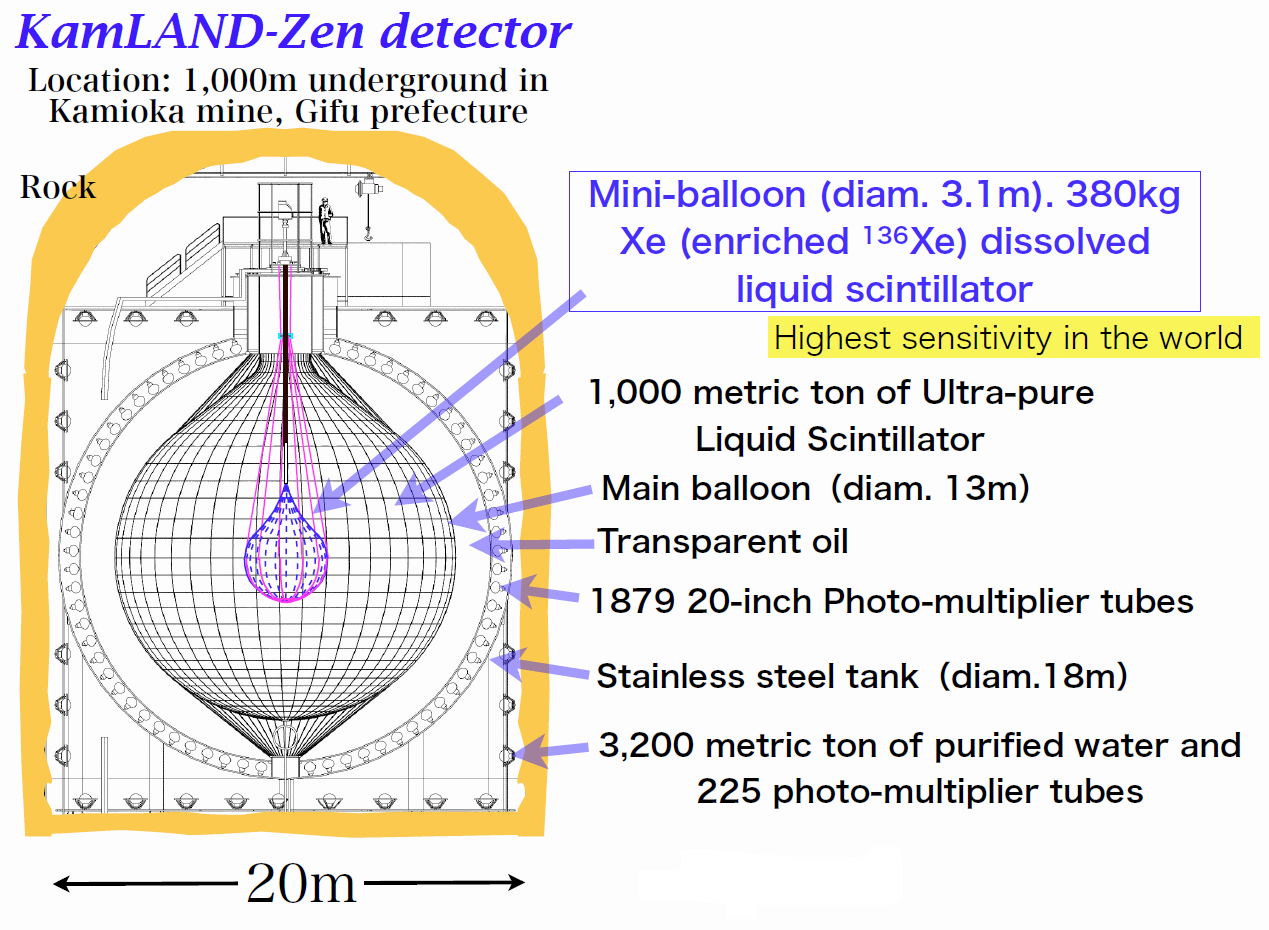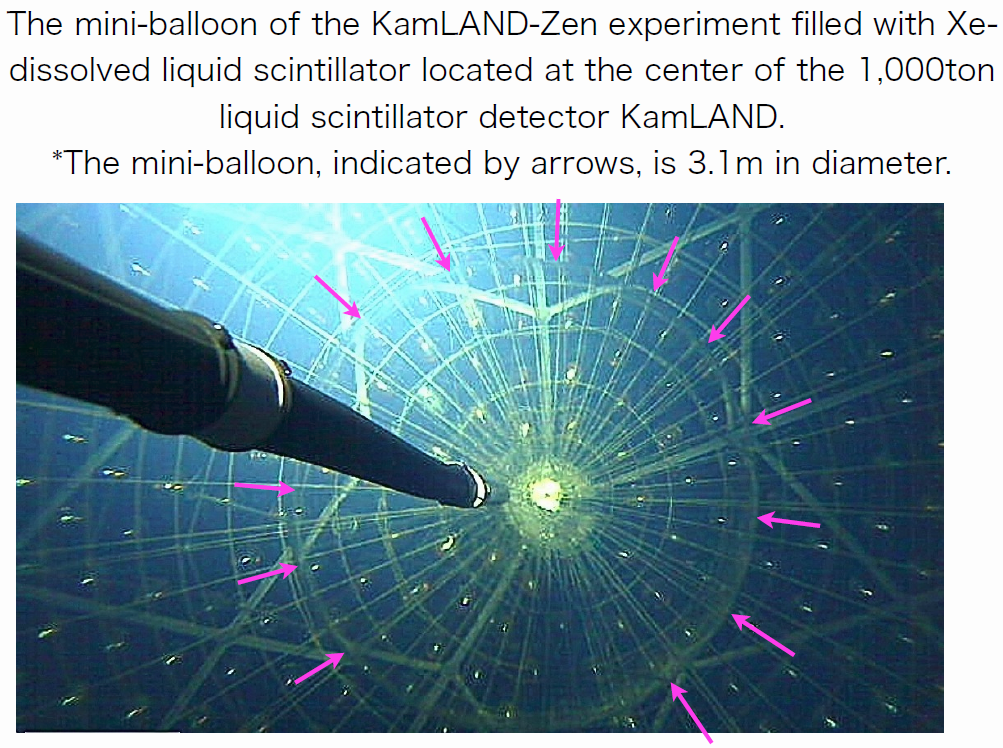Topics
2016.4.4
KamLAND-Zen
Experimental Partcle Physics (Neutrino) Group
Neutrinos are the elementary particles, but they have no electric charges and can be antiparticles themselves. If so, there is a theoretical scenario which explains the reason of neutrinos having so extremely small masses, and at the same time, that leads to the existence of enormously heavy neutrinos. Those “super-heavy” neutrinos have possibilities to be once existed in the very early stage of the Universe, and it might be able to provide a key to explain the matter-dominance of the world. Therefore, testing whether neutrinos are the anti-particles themselves or not, that is they are the Majorana particles or not, is significantly important. The Research Center for Neutrino Science has conducted an experiment, KamLAND-Zen, to verify the Majorana nature of the neutrinos by finding the “Neutrinoless double beta decay”, which is considered to be the only detectable phenomenon, if neutrinos are the Majorana particles. The KamLAND-Zen experiment uses the world’s largest 1,000 metric ton of the liquid scintillator in KamLAND detector facility (Figure1) located at 1,000m underground in Kamioka mine in Gifu prefecture. The KamLAND-Zen experiment conducts the search by placing a small transparent balloon (mini-balloon) at the center of the detector filled with 136Xe-nuclei dissolved liquid scintillator (Figure2). Challenges to observe the neutrinoless double beta decay is currently in a severe worldwide competition. The KamLAND-Zen is upgrading the detector components to conduct the search with an unprecedented sensitivity this year.
The next step will be to investigate the efficiency of temperature gradients for propagation of skyrmions in antiferromagnetic insulators and to develop a theory of spin-orbit torque driven AFM skyrmion motion.
 Fig. 1 |
 Fig. 2 |

